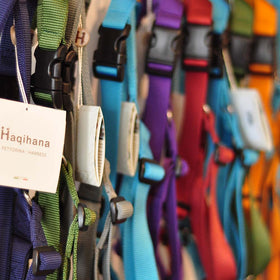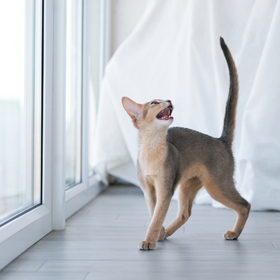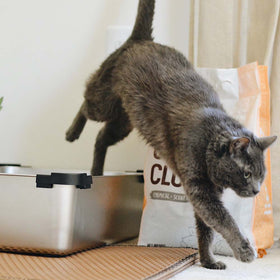
A Pain in the Neck: Collars, Leash Corrections, and Pulling
Some dogs are pulling on collars or being harshly corrected daily without a thought for the damage that’s being done—physical and emotional. This post is focused solely on the physical because the emotional side warrants its own spotlight.
Contrary to what some might believe, just like our own, a dog’s neck is fragile and vulnerable to damage. We’re sure you know how uncomfortable it is to have even a small bit of pressure on your throat. Now imagine how a dog that pulls or is being “corrected” feels. Apart from the increased stress levels, issues like coughing, headaches, neck and back pain, damage to the trachea and thyroid, and eyesight damage can, and often do, occur.
The neck houses so many vital things: the vertebrae of the spine, veins and arteries, the thyroid gland, and nerves that carry signals throughout the body. Damage to this area is hugely detrimental to a dog’s health.

Preventing Neck Issues
There are many things we can do to avoid injuring our dogs’ necks.
Use a quality, well-fitted harness instead of walking them on a collar. Our preference is for a Y-shaped harness that does not restrict movement in the shoulders or chest. Our favourite (by far), and the only harness we sell, is the Haqihana. They’re an Italian company that manufactures superior quality products.
Teach them how to walk on a leash. This is one of the most basic and important things we can do for our dogs. Loose leash walking employs very simple techniques that enables both dog and owner to enjoy relaxed walks together. It also allows your dog to move around freely, exploring and sniffing as they go.
Give your dog gentle massages to alleviate pain or discomfort. You can do this manually with your bare hands or with a rubber brush.
See a canine chiropractor. Chiropractors aren’t just for humans!
Provide them with a pillow or a cushion to support their necks when relaxing and sleeping. They enjoy elevated neck props as much as we do!
Please bear in mind that even if your dog doesn’t pull constantly, it only takes one or a small handful of incidences (like lunging to grab secret sidewalk snacks) to do long-lasting damage.









